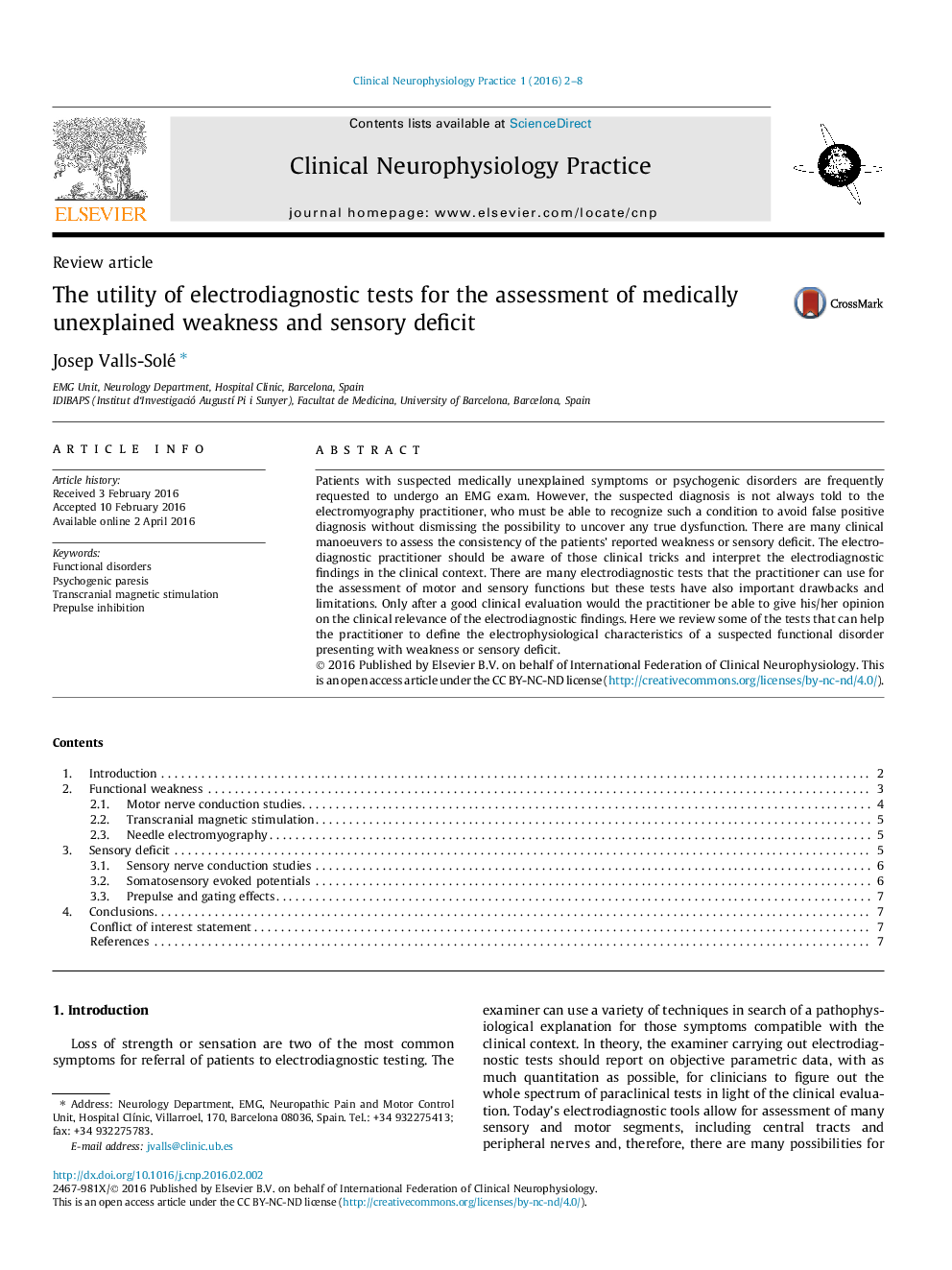| Article ID | Journal | Published Year | Pages | File Type |
|---|---|---|---|---|
| 3049224 | Clinical Neurophysiology Practice | 2016 | 7 Pages |
•Medically unexplained symptoms (MUS) are challenge for electrodiagnostic testing.•Weakness and sensory deficit can be manifestations of psychogenic disorders.•This is a review of electrodiagnostic methods used for the assessment of MUS.
Patients with suspected medically unexplained symptoms or psychogenic disorders are frequently requested to undergo an EMG exam. However, the suspected diagnosis is not always told to the electromyography practitioner, who must be able to recognize such a condition to avoid false positive diagnosis without dismissing the possibility to uncover any true dysfunction. There are many clinical manoeuvers to assess the consistency of the patients’ reported weakness or sensory deficit. The electrodiagnostic practitioner should be aware of those clinical tricks and interpret the electrodiagnostic findings in the clinical context. There are many electrodiagnostic tests that the practitioner can use for the assessment of motor and sensory functions but these tests have also important drawbacks and limitations. Only after a good clinical evaluation would the practitioner be able to give his/her opinion on the clinical relevance of the electrodiagnostic findings. Here we review some of the tests that can help the practitioner to define the electrophysiological characteristics of a suspected functional disorder presenting with weakness or sensory deficit.
